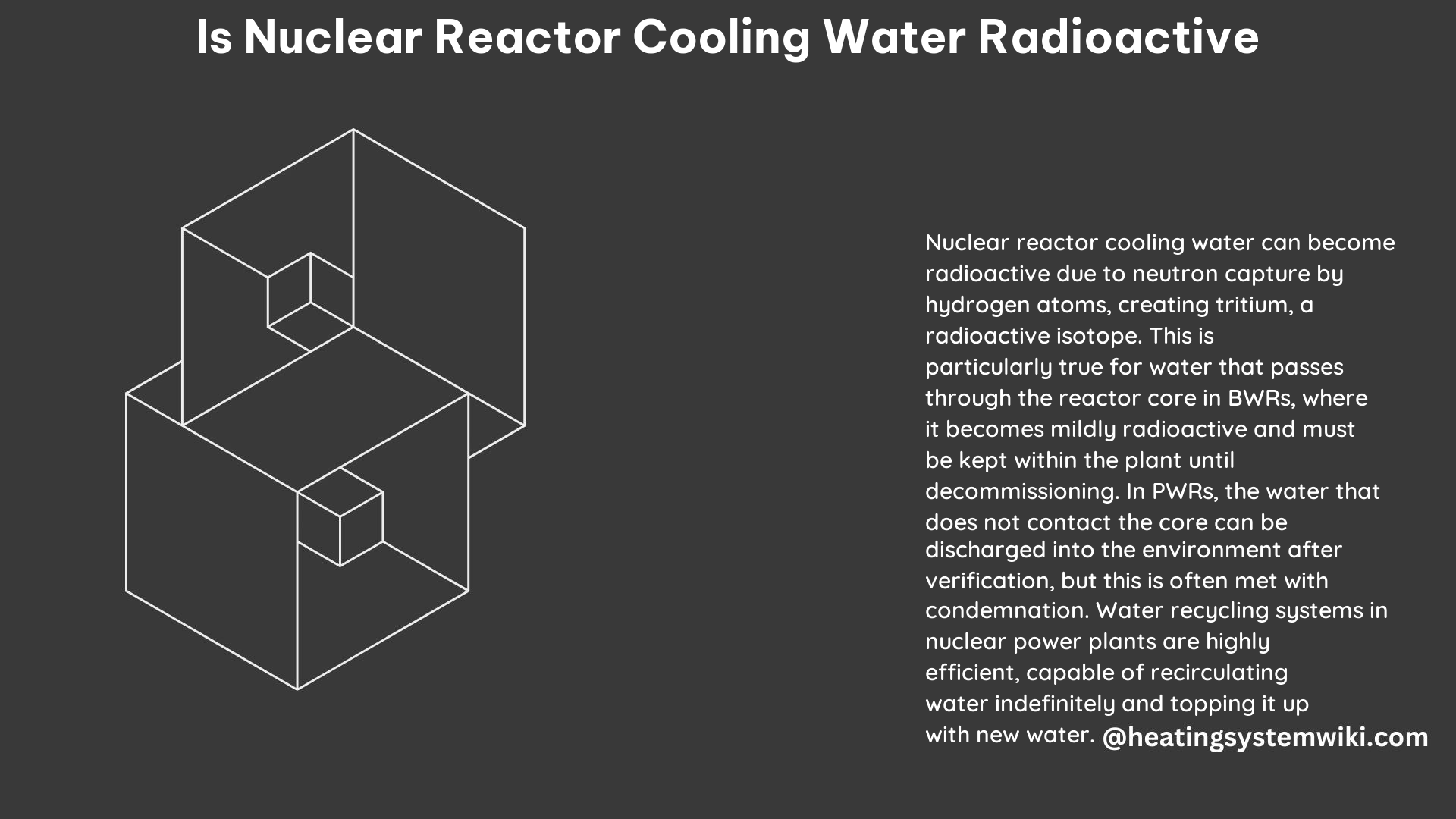Nuclear reactor cooling water can become radioactive due to neutron activation, where the hydrogen atoms in the water coolants are bombarded with neutrons, causing some to absorb a neutron and become deuterium, and then some to become radioactive tritium. This radioactive water can sometimes leak to groundwater by accident or by official approval, leading to radioactive contamination.
Boiling Water Reactors (BWRs) and Pressurized Water Reactors (PWRs)
In Boiling Water Reactors (BWRs), the water from cooling is mildly radioactive but kept in the plant and recirculated in a loop to cool the reactor cores. The water is treated with demineralization, filtration, and distillation to remove radioactive contaminants.
In Pressurized Water Reactors (PWRs), the water does not contact the core, so it is not contaminated and can be released into the environment. However, releasing nuclear water – even when not contaminated – into water bodies is usually met with condemnation.
Water Recycling Systems in Nuclear Power Plants

In both BWR and PWR nuclear power plants, cooling water is reused by purifying it. The water recycling systems used in the nuclear industry are among the most efficient, capable of recirculating water indefinitely, topped up with new water.
| Recycling Process | Description |
|---|---|
| Filtration | Removes strontium and radionuclides from the water |
| Distillation | Purifies the water by vaporizing and condensing it |
| Vaporization | Separates contaminants from the water through evaporation |
The recycling system treats the water to remove radioactive contaminants, decontaminating it to a level suitable for release or use in other processes. When nuclear water is recycled, it gets reused, or the plant operator can request to release it into a nearby water body at the end of its life.
Water Consumption in Nuclear Power Plants
The amount of water required for cooling in nuclear power plants can vary depending on the plant type and cooling needs. Some plants may discharge water directly back into the source stream or lake, while others may use recirculating or indirect cooling methods.
In the UK, the water withdrawal requirement for a 1600 MWe nuclear unit is about 90 cubic metres per second (7.8 GL/d). This is in contrast to coal-fired power plants, which can consume large amounts of water through evaporation and discharge hot water into the environment, leading to thermal pollution.
DIY Considerations
It is not recommended for individuals to attempt to handle or treat radioactive water from nuclear power plants, as this can be extremely dangerous and requires specialized knowledge and equipment. However, individuals can take steps to reduce water consumption and waste in their own homes and communities, such as:
- Fixing leaks
- Using water-efficient appliances
- Collecting rainwater for non-potable uses
Conclusion
In summary, nuclear reactor cooling water can become radioactive due to neutron activation, but it is typically kept in a sealed, closed loop to prevent contamination of the environment. Advanced water recycling systems are used to reuse and purify the water, reducing freshwater consumption and the need for discharge into the environment.
References:
– Smart Water Magazine. (2022). Nuclear power and water consumption. Retrieved from https://smartwatermagazine.com/news/membracon/nuclear-power-and-water-consumption
– Wikipedia. (n.d.). Nuclear reactor coolant. Retrieved from https://en.wikipedia.org/wiki/Nuclear_reactor_coolant
– Reddit. (2019). What happens to the coolant (water) in nuclear power plants once it’s been used? Retrieved from https://www.reddit.com/r/askscience/comments/abxlpe/what_happens_to_the_coolant_water_in_nuclear/
– World Nuclear Association. (2020). Cooling Power Plants. Retrieved from https://world-nuclear.org/information-library/current-and-future-generation/cooling-power-plants.aspx
